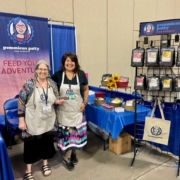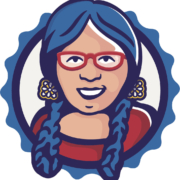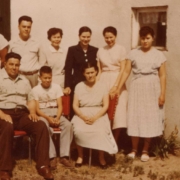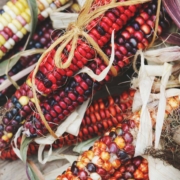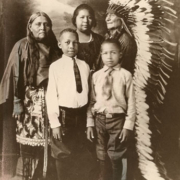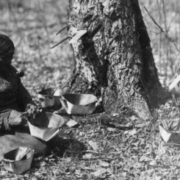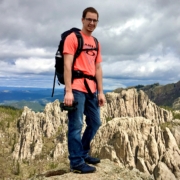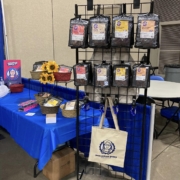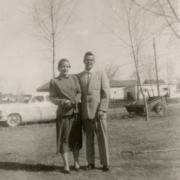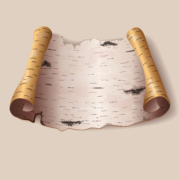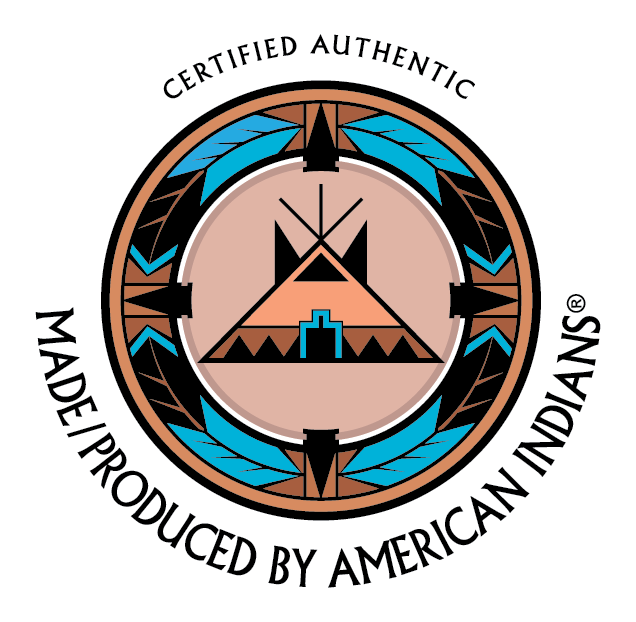African-Native Americans
Until recently, the topic of historic relations between Native Americans and African Americans has been somewhat neglected. The lives and experiences of people who share African American and Native American ancestry contain stories that have been invisible for ages.
Some reports indicate that, after 1492, large numbers of Natives were being shipped to Europe as slaves. Many of these slaves were then shipped from Spain to Africa. Survivors and descendants of the original group that later returned to America were now classified as “African Slaves”. African and Native people coming together in the Americas was first recorded in 1502. Many Indigenous people of the Eastern Woodlands as well as people of a few nations historically from the Southeast have a significant amount of African as well as European ancestry.

Comanche Family early 1900’s
Courtesy Same Devenney
Unfortunately, the relationship between Blacks and Natives before emancipation was often uncertain. A number of Native American tribes have had close relations with African Americans, especially in areas where slavery was prevalent or where free people of color have historically lived. Members of the Five Civilized Tribes participated in holding enslaved African Americans in the Southeast. Some enslaved or formerly enslaved people migrated with them to the West on the Trail of Tears in 1830 and later during the period of Indian removal. Some Seminole Natives of Florida formed communities with escaped Africans that came to be known as Black Seminoles. Hundreds of Africans traveled with the Seminole nation when they were forced to relocate to Native American territory.
Native Americans nicknamed the African American cavalrymen that they fought in the late 1800’s “Buffalo Soldiers”. The origin of this nickname is not certain. It may have had something to do with the appearance of their dark curly hair resembling the buffalo. These Buffalo Soldiers fought so fiercely that the Natives may have regarded them in a way that compared to the buffalo. On occasion, Buffalo Soldiers married into Native American families. This was similar to the blending of European and Indigenous cultures among the Metis.
Over centuries, African Americans and Native Americans created shared histories, communities, families, and ways of life. They were often separated from others by prejudice, laws, and twists of history. These mixed-blood people lived with a mutual struggle against slavery and dispossession that continues to touch their lives today.
For African-Native Americans, much like the Metis, double heritage will forever be inseparable.
How the OJIBWE People Got Maple Syrup
Maple syrup harvesting is the primary activity of the springtime. It is considered one of the sacred foods to the Ojibwe people. The sap is considered medicine and if someone offers you maple syrup it’s kind of a big deal.
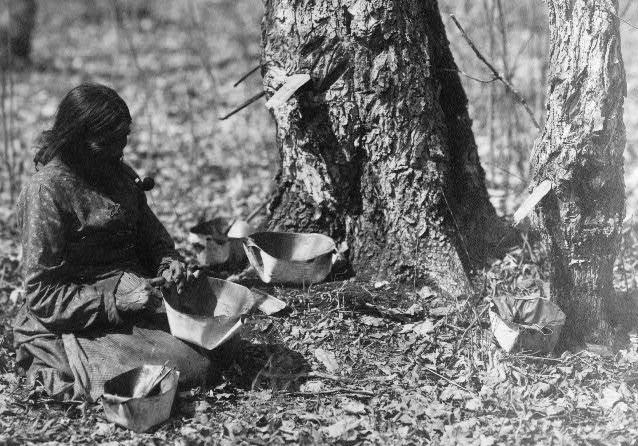
How the Ojibwe people got maple syrup tells a story of how the Ojibwe people were starving & the maple tree saw this and took pity on them. This story is representative of how in our culture you have to work hard for what you get, especially food.
“A long time ago, winter had ended, or was about to end, and there was no more food left. People were hungry and this man was walking around foraging for food. An ininaatig (Maple Tree, Man Tree) saw him and felt bad for this poor human who could not sustain himself or his people. He took pity on him and gave part of himself to the man.
He said, “Listen Anishinaabe (Original People, another name for Ojibwe), I pity you. What I think you should do is cut off one of my branches and something will come out that has a great caloric density that will last you a very long time. You can cut it out and harvest it and give it to your people. All trees that look like me will do this.”
When the man cut off the branch, a thick brown sweet liquid fell out and it was maple syrup. It was really good, sweet, and relatively easy to get because all you had to do was cut a branch off.
A lot of Ojibwe people began laying under the trees and cutting branches off with their mouth open to eat the syrup. They were becoming idle and plump, so the trickster, Nanaboozhoo, came along and asked them why they weren’t doing their jobs and fulfilling their jobs instead of eating syrup. The people became too satisfied to even respond to Nanaboozhoo, so he went to the river and got a pail of water and poured it into the maple tree. It diluted the maple syrup and what came out of the tree was sap.
The Anishinaabe were shocked and then Nanaboozhoo said, “if you want syrup you have to work for it. you have to tap the trees and boil it. You need 40 gallons of sap to make one gallon of syrup.” This is how the Ojibwe people got maple syrup and we still do it today.
According to one source1, the Ojibwe people got maple syrup from a maple tree that took pity on them when they were starving and told them to cut one of its branches and enjoy the sweet syrup that came out. However, they became idle and stopped hunting and gathering other food, so the trickster Nanaboozhoo diluted the syrup with water and made it into sap, which required a lot of boiling to make syrup. He said they had to work for it if they wanted to enjoy it.
Another source2 says that maple sugar was a traditional staple in the Ojibwe diet and culture, and that they harvested it every spring by drilling holes into sugar maple trees and collecting the sap in birch bark containers. They then boiled the sap in cast iron kettles until it became granulated sugar, which they used as a primary seasoning in their food.
Both sources agree that maple sugaring was an important part of the Ojibwe people’s life and that they used different methods and technologies to produce it over time.
Rediscovering Our Family History
Pemmican Patty Food Company is a family business. It is owned and operated by my brother, Mike, his son, Micah, and me, Patt Mabin. Together we share a beautiful blend of experience, wonder, resilience, and hope.
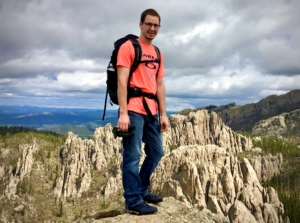 Micah is our adventuresome soul. He contributes to the richness of our family and partnership with his vast knowledge of nature, geography, history, culture and so much more.
Micah is our adventuresome soul. He contributes to the richness of our family and partnership with his vast knowledge of nature, geography, history, culture and so much more.
Micah has been exploring Turtle Island for the past few years. We “travel” with him through “on the road” conversations as well as the highly anticipated family slide shows that we enjoy upon his return.
Micah headed east this time and visited the Hjemkomst Center in Moorhead, MN . There, he discovered a section that told the history of the fur trade and the Metis’ people in the Cass County area. To his surprise, Micah began reading about Old Wild Rice and Chief Little Thunder (Joseph Gourneau Sr.) and their roles in the development of the region.
We are descendants of Chief Little Thunder (Joseph Gourneau), and his father before him, Old Wild Rice. Old Wild Rice is one of the earliest recorded Chiefs of the Pembina/Turtle Mountain Band of Chippewa Indians.
As he shared what he had discovered, we talked of buffalo hunts and Red River carts. We recalled stories of our ancestral grandparents. Once again, Micah brought history to life for our family. He has connected yet another generation to our heritage and confirmed that we are still here.
Blend of Cultures Working Together

UTTC Summit Vendor Booth
Pemmican Patty Food Co. participated in its first UTTC Tribal Leaders Summit prior to the annual Powwow last week. It was an AWESOME experience! Talk about a blend of cultures working together for a common goal! Even though we were there to share our products, the biggest reward was in the connection with people that we saw during those three days.
I had the pleasure of sharing our vendor booth with someone I might call “sister” and had the opportunity to see her shine as well! It’s been an honor to be included in her world. Were it not for our heritage, we may never have taken the time to get to know each other. Although our tribal affiliations are different, our values of respect, honesty & integrity were obvious.
Once again, I learned that we human beings have more in common than not, especially when it comes to family & friends. Our love and commitment to them continue to keep us trying to make a better world “in a good way”. I felt the presence of our Creator and our ancestors. It was a feeling that we’re all related in one way or another. Another beautiful blend!
Irish and Metis Connection
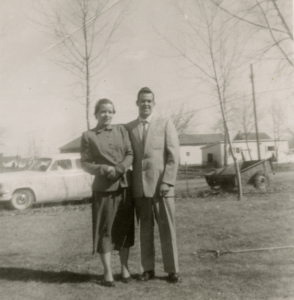
Grandma Lu and Dad (F.M. Mabin)
St Patrick’s Day is celebrated in more countries than any other national festival. Growing up as baptized Catholics, I remember dad telling us that we had “a bit of Irish in our blood”. Mom also encouraged us to be proud of our Indian heritage. With those things in mind, I’ve begun to explore the connections in my Métis heritage.
While not all Métis belong to the “Métis Nations”, this term (Métis) refers to all people of mixed Indigenous North American and European heritage. In the late 1600’s, French fur traders married Indigenous women during the colonization of Canada. Irish and Scottish trappers and traders intermarried with Indigenous women in the 18th and 19th centuries. These marriages not only benefitted the fur trade business but also helped to spread religion.
Métis culture blends elements from both Native and European traditions but is completely different from both. One common trait among the Irish and Metis people is their Catholic religion. Additional similarities are found in their music and dance. The term “jig” usually refers to a tune in the Scottish/Irish tradition, but the Metis use of the term is more like a combination of Plains First Nations footwork with Scottish, Irish and French-Canadian dance forms.
There are many more similarities between the early Irish and Native experiences. Both cultures were first invaded by people whose religion was Catholicism. Each walked a trail of sorrow that resulted in the death of hundreds of people. Kindness and generosity shared by the Choctaw to the Irish during the Irish famine has formed a bond between the nations that remains strong to this day.
Check out the link to an enlightening article that expands on this topic:
Language and Communications
There’s been a common misconception that Indigenous people all spoke the same language. A widely known fact is that the Navajo “Code Talkers” made an impact during WW1. But did you know that Choctaw, Cherokee and Comanche languages contributed to the “code” as well?
Just as there are different Spanish or German dialects, the same is true for the many tribes of Turtle Island.
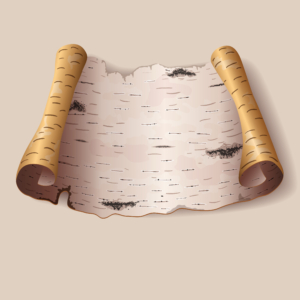
Piece of birch bark for scroll
Most early education of Native people came from observation and oral teachings, generally shared by elders of the communities. The Ojibway people recorded histories and legends on birchbark scrolls. Some plains tribes used the “winter count” pictographs. These pictographs documented significant events of the year, generally on animal hides or muslin. All across Turtle Island, sign language was widely used and still is today.
In the effort to “assimilate” our ancestors, Indigenous languages were stifled for almost a century in the U.S. Native children were removed from their homes and placed in boarding schools. In these boarding schools, children were forbidden to and punished if they used their native tongue. My mother remembers her parents speaking Michif very rarely, and only in the privacy of their home. Today, although many of those languages have been lost, there is a great effort to revive the languages of many tribes. Some communities offer “total immersion” programs for both children and adults.
The variety of dialects in the Anishinaabe/Ojibway/Metis cultures alone is amazing! Northern and southern influence as well as Cree and French contribute to Michif language used by the Metis. I’ve tried to learn a few phrases without the help of a mentor, so please forgive any errors! In the language of my ancestors:
“Maarsii poor toon taan & Enn bon zhornii ayahkun!!”
“Thanks for your time & Have a good day!!”

